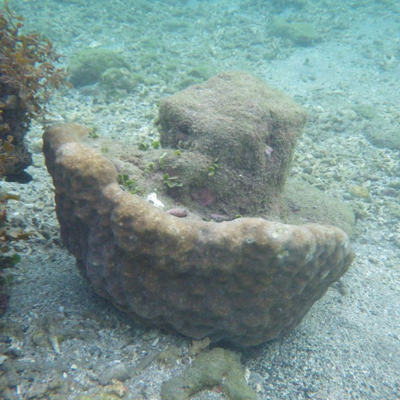
Three weeks after Typhoon Bopha: all the Acropora coral species are dead and covered in algae and sediment. Photo courtesy of ESI.
When Typhoon Bopha, also known as Pablo, ran ashore on Mindanao, it was the largest tropical storm it ever hit the Philippine island. In its wake the massive superstorm left over 1,000 people were dead and 6.2 million affected with officials saying illegal logging and mining worsened the scale of the disaster. However, the Category 5 typhoon also left a trail of destruction that has been less reported: coral reefs.
“At our sites coral species exposed to the typhoon have been destroyed, broken, and displaced,” Pierre Fidenci, the head of Endangered Species International (ESI) told mongabay.com. “Some young massive species have been turned down and displaced by the intense underwater movement. It is incredible to see the damages, we often look at land damages, but underwater ones are massive. We have found that young corals, especially the one recovering from past human impacts (fishing and sedimentation) have been completed wiped out after the typhoon.”
The ESI has found that 80 percent of coral cover has been lost at two of the sites they monitor—out of five across the Coral Triangle. Fidenci notes that delicate coral, such as those in the Acropora and Millepora genus, were most particularly impacted, while stony coral, like Porites, fared better.
“The waves generated by typhoons are so large and powerful [they can change] coral reef ecology and morphology. Injuries to corals include breaking coral branches, overturning colonies, and more dramatic, destroying coral,” he says.
Scientists say that while climate change may not be increasing the total number of tropical storms, it is likely spawning more severe hurricanes and typhoons. Already climate change is seen as a existential threat to coral reefs due to ocean acidification and rapidly rising marine temperatures. But the potential impact of superstorms on reefs has not been widely reported.
Given the number of threats to coral reefs—including overfishing, disease, pollution—Fidenci fully expects a number of coral species to fall into extinction this century.
“If we had only hurricanes or typhoons to deal with, then that would be OK, but there are a myriad of human induced impacts beyond global warming that we have to address very seriously and quickly if we want to have coral reefs around.”
Fidneci, who has spent years working in the Philippines, says that the Filipino government has still not taken to heart the lessons of Typhoon Bopha.
“The government continues to allow coastal destruction and construction along sensitive coastlines, and encourages population growth. Further, lack of massive reforestation programs means that such disastrous events will be repeated soon!” he warns.
Sometimes called “the rainforests of the sea,” coral reefs are the most biodiverse ecosystems on Earth, harboring numerous well-known and more cryptic species.
A strong Porite species turned over by the typhoon. Photo courtesy of ESI.
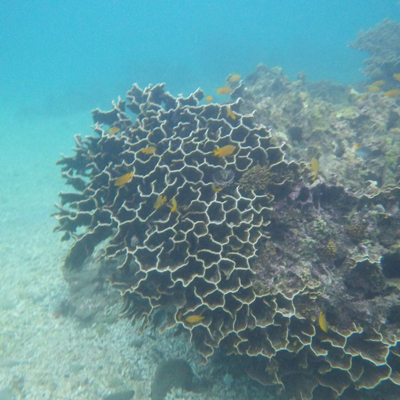
A heavy coral structure turned 90 degrees down by massive waves. Photo courtesy of ESI.
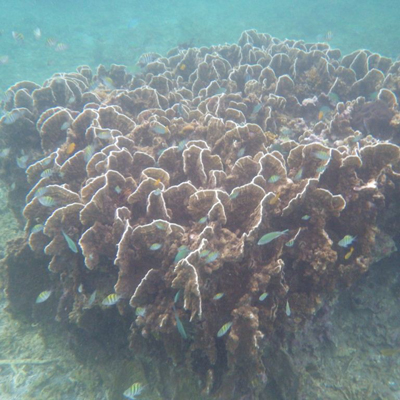
A heavy coral structure turned 90 degrees down by massive waves. Photo courtesy of ESI.
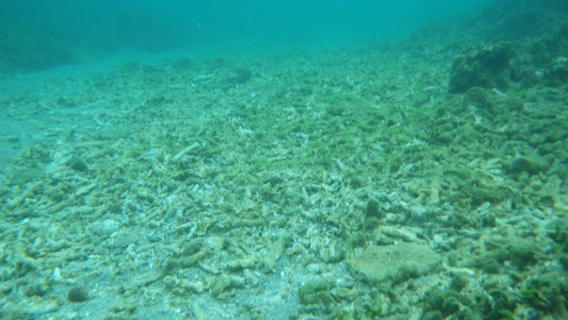
Another area completely impacted by the strong waves of the Typhoon Bopha. Photo courtesy of ESI.
Related articles
Illegal logging, mining worsened impact of Philippines’ killer typhoon
(12/06/2012) According to Filipino officials, rampant illegal logging and mining were likely a part of the cause for the high casualty count from Category 5 Typhoon Bopha (Pablo), especially in the Compostela Valley where government officials had warned people to stop the illegal activities. So far, 370 people have been found dead on the island of Mindanao with another 400 missing. Waters rose so high even emergency shelters were inundated.
Photos: Mozambique creates Africa’s biggest marine protected area
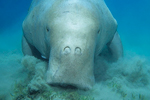
(11/13/2012) Last week, the East African nation of Mozambique announced it was protecting 10,411 square kilometers (4,020 square miles) of coastal marine waters, making the new Marine Protected Area (MPA) the biggest on the continent. The protected area, dubbed the Primeiras and Segundas Archipelago (“First” and “Second” islands), includes ten islands as well as mangrove forests, rich coral reefs, and seagrass ecosystems.
Threatened Galapagos coral may predict the future of reefs worldwide

(11/07/2012) The Galapagos Islands have been famous for a century and a half, but
even Charles Darwin thought the archipelago’s list of living wonders
didn’t include coral reefs. It took until the 1970s before scientists
realized the islands did in fact have coral, but in 1983, the year the
first major report on Galapagos reef formation was published, they
were almost obliterated by El Niño. This summer, a major coral survey
found that some of the islands’ coral communities are showing
promising signs of recovery. Their struggle to survive may tell us
what is in store for the rest of the world, where almost
three-quarters of corals are predicted to suffer long-term damage by
2030.
Great Barrier Reef loses half its coral in less than 30 years

(10/01/2012) The Great Barrier Reef has lost half of its coral cover in the last 27 years, according to a new study released today in the Proceedings of the National Academy of Sciences (PNAS). Based on over 2,000 surveys from 1985 to this year the study links the alarming loss to three impacts: tropical cyclone damage, outbreaks crown-of-thorns starfish that devour corals, and coral bleaching.
Coral diversity off Madagascar among the world’s highest
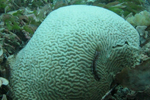
(09/24/2012) The western Indian Ocean, especially the waters between Madagascar and mainland Africa, may be among the world’s most biodiverse for coral species, according to a new study in PLOS ONE. Conducting dive surveys in the region for nearly a decade, David Obura with the Coastal Oceans Research and Development in the Indian Ocean (CORDIO) identified 369 coral species in the western Indian Ocean and predicts there may be nearly another 100 unidentified. If so, this would make the region as biodiverse as the Great Barrier Reef, but still behind the Coral Triangle which has over 600 species.
Coral reefs in Caribbean on life support
(09/11/2012) Only 8 percent of the Caribbean’s reefs today retain coral, according to a new report by the International Union for Conservation of Nature (IUCN). With input and data from 36 scientists, the report paints a bleak picture of coral decline across the region, threatening fisheries, tourism, and marine life in general.
